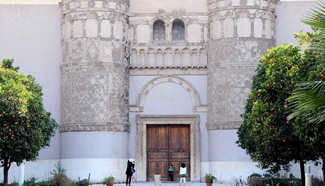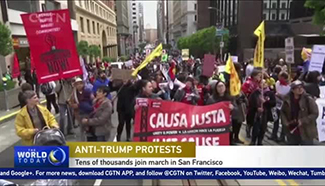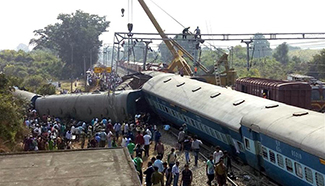by Will Koulouris
SYDNEY, Jan. 23 (Xinhua) -- A comprehensive report released Monday by Commonwealth Securities (CommSec) has revealed the Australian state of New South Wales is the best performing economy in the nation.
New South Wales held onto its top spot from last year, with Victoria and the Australian Capital Territory (ACT) rounding out the top three.
The growth in New South Wales was driven by solid showings in all the key determining factors used by the report to assess the yearly results of the states, with economic activity in New South Wales listed as being 24.3 percent above its 'normal' level of output.
The state also has exceptional showings in terms of its housing construction, with new developments coming in at 81 percent above decade averages, and growth in September alone being 13.2 percent higher than the previous year.
The author of the report, CommSec chief economist Craig James, told Xinhua this trend is likely to continue for the top state over the next two years, with "a lot of building completed in that time," but James does wonder what the next leg of growth for the NSW economy will be.
"Clearly when you are building your economy on residential construction there's going to be some challenges when that work is completed, so that is something to look for in NSW," James said.
But Linsday David, chief economist at LF Economics, told Xinhua he is concerned with a potential shock to the New South Wales economy, as households are "hideously leveraged and dependent on the housing construction boom and expanding leverage."
"Inevitably, this housing construction boom will come to a painful halt. This is a classic credit-fuelled housing bubble," Lindsay said.
There was not much to separate the other regions in the top two, Victoria and the ACT, with both achieving stronger results than their 10-year averages.
Victoria experienced quite a boom in their population growth, recording 2.07 percent growth over the last year, with housing finance commitments also up 11.9 percent on the long term averages.
One of Australia's leading economists, Saul Eslake, believed a case could be made for both New South Wales and Victoria to take the top spot, as although New South Wales has a lower unemployment rate than Victoria, results would suggest they are doing well in other areas.
"Victoria has had to create more jobs for a more rapidly growing population," Eslake told Xinhua.
"In some ways the ranking of New South Wales and Victoria surprises me a bit, but there is no doubt that those two states are, whichever one you want to put first or second, those two states are leading the economy."
One of the major surprises to come out of the report was that of Tasmania, which rose dramatically up the rankings, to the 4th from last years 7th place.
Describing the result in Tasmania a "surprise," James said, "Population growth has picked up, housing affordability has improved, and some of the states have slipped a bit further so Tasmania was able to improve its position."
But Eslake suggested taking that result with a grain of salt, as although the state has not being losing as many people net over the last five years, and is doing well in tourism "particularly from China," there are worrying trends to consider.
"Tasmania is one of the few states where housing finance for owner occupation is growing strongly, but a surprisingly large proportion of that increase in housing finance in Tasmania is refinancing of existing mortgages," Eslake said.
"Building approvals are falling 20 percent year on year in Tasmania. The selection of the particular indicators just so happens to have presented Tasmania in a more favorable light."
The report was not without its disappointments, as both Western Australia and the Northern Territory both performed poorly according to the figures, finishing 8th and 6th respectively.
James attributes the performance in the Northern Territory to a lack of "momentum" in the past year, combined with the "gas projects coming through and reaching maturation."
"The lack of population growth in the Northern Territory is also a concern," James said.
On Western Australia, Eslake conceded that the results there are far from promising.
"Western Australia is having a hard landing from the boom it enjoyed for the last 10 years. That's reflected in the financial difficulties of the State Government, and the rise of unemployment so that they are now above the national average," Eslake said.
South Australia is second from the bottom in 7th place according to the report, and James said the state "hasn't changed too much in terms of its ranking,"
"People in South Australia would like to see a little bit more direction from the government as to what's going to drive the economy over the coming years, they want to get a degree of confidence over the economic direction," James said.
Queensland rose one place to be ranked 5th overall, on the back of strong figures in housing construction, which according to the report will "support the job market as well as consumer and business spending," while tourism and rural exports should continue to drive the economy in the state.














